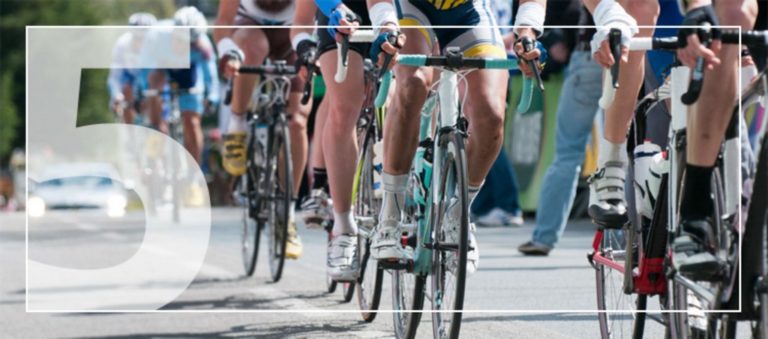The COVID-19 pandemic caused quite a stir in the race organizing industry. Race directors have had to get more creative than ever for the show to go on. Even popular racing events like the Grand Prix and the Kentucky Derby had to go virtual in 2021. Against all odds, organizers still managed to break records and keep the audience on the edge of their seats. This proved that hosting virtual endurance events is a great option to offset the effects of last year’s lockdowns when done right. This trend could change the racing event world forever.¬†¬†¬†
Racing events ‚ÄĒ marathons, triathlons, bike rides, horse derbies, and so on ‚ÄĒ have great power to pull viewers of all ages and locations. There’s something particularly exciting about watching others push past their limits to get to the finish line first. Besides, these types of sporting events are extremely easy to follow, even for newcomers. That’s why, now that event attendance is gradually increasing again, getting spectators to go back to the grandstand (or involved in your online exhibitions) should be easy, especially if you follow our suggestions.
‚ÄĆ5 Tips to Succeed in Race Organizing in 2022
The social distancing era had the whole world struggling, and the racing events world was no exception. To keep spectators and race participants healthy and safe, gathering large groups of people either outdoors or indoors became banned almost overnight. As a result, numerous race organizers had to cancel or postpone their events or move them to a virtual platform to combat the virus.
Once you and your audience are ready to get back on the show-attending horse, the following strategies will help you run successful events that stand out among the rest.
1. Choose Your Venues Wisely
A venue can make or break a racing event. You need to ensure the location you pick is convenient and has all the basic elements to keep everyone comfortable. Nowadays, flexibility is more important than ever, and both spectators and participants need to feel safe while attending a racing event. Here are some things to keep in mind when choosing a venue:
- Making distancing easier: One of your main priorities should be having enough room to enable physical separation at an on-site racing event. Mark out spacing using signs and decals so people can stay at least six feet apart. Be sure to also choose large, outdoor venues with good airflow whenever possible. 
- Providing sanitizing products: It has become common practice to carry your own, but you shouldn’t expect it. Protect your audience and staff by offering hand sanitizer, disinfecting wipes, and even extra masks. Place them at entrances and exits so that people can access them easily.¬†
- Offering contactless options: The fewer surfaces people touch, the better. Minimize money transactions and other interactions by using technology in your favor. You could set up a website for attendees to register and check-in, encourage contactless payment, and implement QR codes so that everyone can check the event’s schedule, maps, and more.¬†Events.com allows you to check in attendees by scanning QR codes, using voice recognition, or swiping right in the Event Assistant App.¬†
2. Stay Informed on the Newest Event-Organizing Trends
The event industry is ever-changing: audiences are expecting bigger and better things from each event they attend. Keeping an eye on what other event directors are doing is an excellent way to keep up with the times. Of course, you’re not going to copy the overall format of other racing events. You want to make sure yours are unique and give people something to talk about. However, staying observant can help you come up with newer and better ideas for race organizing.¬†
Monitoring social media is a great place to start. Not only will it tell you what type of events are happening nearby, but it will also give you a sneak peek of what’s going on with racing events across the globe. News outlets will provide valuable insights into the post-pandemic event attendance status and help you decide the best course of action to increase attendance. For example, Race Directors HQ editor-in-chief Panos Gonos¬†said in a recent podcast that many race participants have been signing up later (closer to the event date) than they did pre-pandemic. This is likely because they want to make sure the race will actually take place.¬†¬†
3. Begin Your Race Marketing Efforts Early
Advertising your event and creating anticipation are perhaps the first measures you should take to ensure people will be there. But generating enough buzz requires an intelligent campaign that uses multiple outlets and conducts outreach to many different types of audiences. Nowadays, there are numerous options to spread the word efficiently about your racing event. Depending on your budget, you could resort to both digital and traditional materials using these common options for race organizing.
Billboards
Place this type of event advertisement somewhere your audience can’t ignore it while walking or driving around town (in high-traffic areas). When done right, a giant poster with all the relevant information about your event will certainly grab your audience’s attention and at least get them curious. Make sure to get creative and add some eye-catching elements.
Digital ads
It’s no lie that the average person spends a significant amount of their day scrolling through their favorite sites on their phone. Take advantage of that fact and implement a mobile-friendly digital campaign to promote your racing event.
Events.com offers several ways to promote endurance events to spread awareness, drive traffic to your event page, and even convert potential attendees to purchase tickets. Events.com Promote allows you to get your event on local event calendars in your event area, run basic digital ads on sites like Facebook, Instagram, and Google, and run conversion-based campaigns to attract more ticket buyers. Our expansive tools allow event organizers with different objectives and budgets to easily promote their events throughout the entire event lifecycle. 
Flyers
It can’t hurt to resort to physical advertising to promote your racing event. A neatly designed flyer can grab the eye of potential attendees and make the word spread like wildfire. Plus, unlike a billboard, it allows you to add a lot of information about the event. Placing your flyers in high-traffic areas or having your staff members hand them out will increase your likelihood of reaching a broad audience.¬†
Broadcast media
According to a report by Nielsen, radio is still media royalty among Americans. Radio ads can reach up to 92% of the country’s population while performing their everyday activities, like driving. Placing info about your event on local radio stations to provide information on dates and ticketing prices for your event is a great tactic to get the word out. You can also resort to local TV stations for the same purpose.¬†
4. Offer a Virtual or Hybrid Option
While it’s true that nothing can replace the level of excitement a face-to-face experience brings, the pandemic has made event-goers and organizers rediscover the benefits of virtual events. Hosting your endurance show online can even put it in the spotlight for attendees from other states or even other countries. A virtual or hybrid option is an excellent way to increase your revenue stream while showing your concern for your audience’s post-pandemic comfort levels.
Virtual events are more popular than they were pre-pandemic among certain audiences like younger people, and there are plenty of options to keep your participants and spectators engaged. You could easily implement the following elements both at an online-only show or at a hybrid event:
- Contests and prizes for online participants
- Breakout rooms to encourage collaboration and discussion
- Live online polling
- Live Q&A sessions
You can also establish virtual activities for those participants who can’t physically participate in your in-person racing event. Some ideas are:
- Endurance challenges: Participants can try to achieve a number of miles before the main event takes place. Events.com offers a tool called EveryChallenge¬ģ, where event organizers can host virtual endurance challenges to increase their revenue. Meanwhile, participants can choose to share their performance and track their results by using smart devices such as Fitbit and Strava, in addition to earning custom badges.¬†
- Virtual races: These can be both live or asynchronous, and people can cover the same distance as in-person participants from their own location.
5. Keep Your Audience Engaged
Leading up to the event, you want to keep active communication with potential event-goers. This will help keep everyone excited for the upcoming race and further spread the word. To achieve this when race organizing, you can:
- Constantly update your social media accounts
- Reach out to past attendees with loyalty discounts
- Offer early-bird benefits
- Give exclusive event sneak peeks
- Generate relevant content for online platforms
- Send ‚Äúget ready‚ÄĚ emails to registered attendees
Moving Forward
Even with the pandemic aftermath, race organizing and planning shouldn’t have to cause you major headaches. The key takeaway is that as long as you listen to your participants’ and potential attendees’ concerns and adapt to their needs, your event can still be successful. Once you take care of this, event planning, ticket selling, and keeping track of your virtual and live events should run a lot smoother.¬†
Events.com can help you make race management feel like a breeze. We have terrific mobile-first solutions to keep your event running smoothly, rain or shine, from flexible ticketing systems to effective promotion programs. The platform even allows you to seamlessly integrate your favorite live-streaming services into your landing page for hybrid events. Visit Events.com now and discover all the benefits of planning your racing event with us or request a free demo.  







